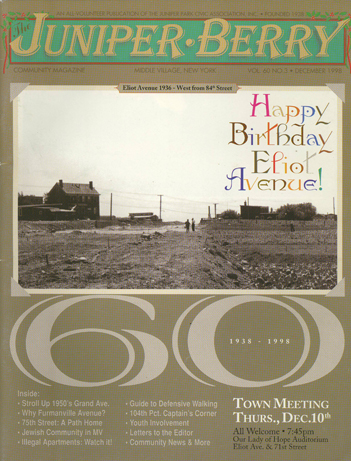Most of us have heard of – and hopefully practice – defensive driving, but what about practicing defensive walking?
We sometimes believe that, as pedestrians, we automatically have the right-of-way and that it is the drivers responsibility to look out for us. That attitude can be fatal.
Walking is a necessary part of our daily lives. We walk to work or to go shopping. Our children walk to school. Those of us who are sports minded go jogging. Just about everyone, at one time or another, is a pedestrian.
There are a number of things pedestrians can do to protect themselves. As children, many of us were taught to “look both ways” before crossing, but looking both ways isn’t always enough to keep you out of danger.
GOOD LOOK
You need to LOOK LEFT for approaching vehicles, then LOOK RIGHT, and then LEFT AGAIN before entering the street, because your most immediate threat is to your left.
Don’t CHALLENGE TRAFFIC. Never assume traffic will stop because a signal says it should. Vehicles may run the light or be turning when the light changes.
PAY ATTENTION TO THE WEATHER.
In bad weather don’t let your umbrella or clothing such as hoods or scarves block your view of approaching traffic. The drivers visibility is also impaired in bad weather. It takes a vehicle longer to come to a stop on a slippery road.
AVOID ALCOHOL.
Drinking and walking is almost as dangerous as drinking and driving. Alcohol impairs your judgment and can cause you to overestimate a vehicle’s distance and underestimate its speed.
Children up to age 14 account for 34% of all pedestrian injuries, while older adults have the highest pedestrian death rate.
Children don’t understand the dangers associated with automobiles and don’t realize that cars may not be able to stop for them. They have difficulty judging a cars speed and distance. They may be so intent on chasing a pet or retrieving a ball that they run into the street without looking. Young children should never be allowed to play in driveways. Because of their height, a driver who is backing up may not be able to see a child playing behind a car.
Older adults are very vulnerable to serious injury or death in pedestrian crashes. They are generally less able to withstand the force of the crash and sustain much more serious and often fatal injuries. Older adults should pay special attention to their surroundings. Many times they rely on traffic signs and signals and assume traffic will stop according to those signals. Remember their is no automatic right -of- way. Because older adults tend to be less agile, many fear they will not have enough time to cross the street safely. To compensate for slower movement wait for a signal that has just turned green. Don’t be lulled into a false sense of security by marked crosswalks, signals or traffic signs. All it takes is one moment of carelessness for a pedestrian crash to occur.
We must work together to make our community safer. By using common sense and taking basic precautions we can prevent the tragedy of pedestrian crashes.



